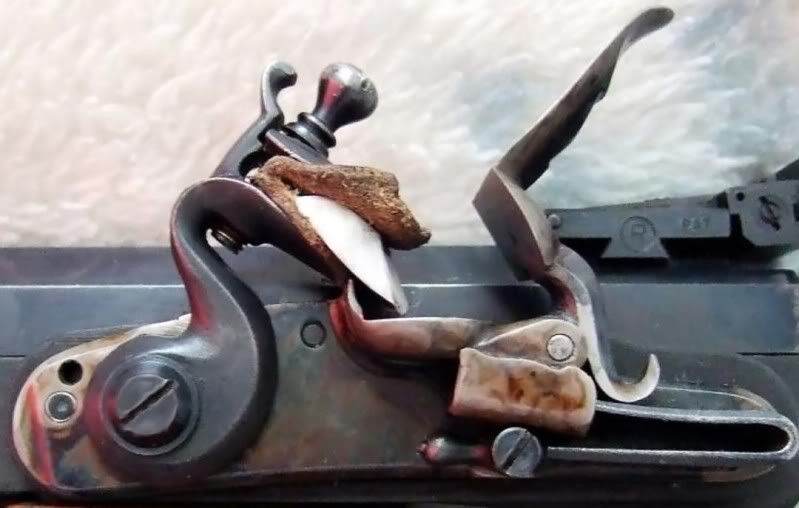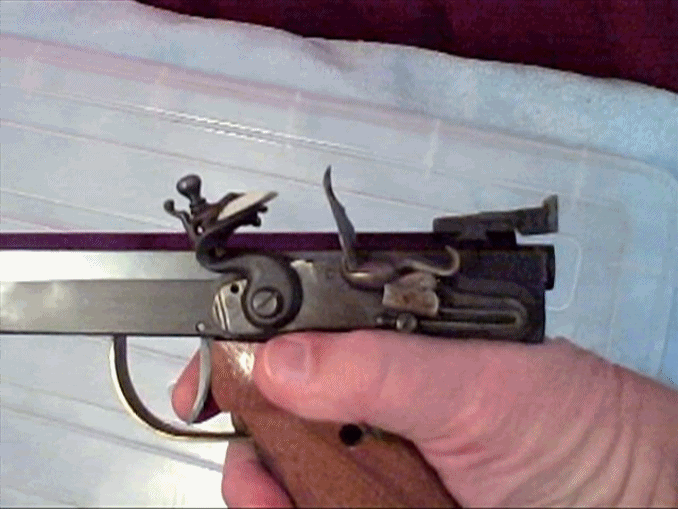ursavus.elemensis
New member
Instructions for installing flint into the cock jaws of a flint lock seems so basic to flintlock shooting that surely there must be Internet page after page of pictures, diagrams, and text. If so, my search engines can't really find any of this info!
I've got a Lyman Great Plains .50 flintlock rifle that I got last week. So far, I love it!
Can't figure out for the life of me how to figure out the proper way to position the flint. I am guessing that one would want the hammer on half-cock and the frizzen closed over the pan, and then that one would want the flint edge to just barely be not quite touching the frizzen face. Right? If I am wrong, please advise. I figure that one can't really set it properly with the hammer on full cock or fully forward over the pan, right? And, for the frizzen, I figure that if it is open all the way it would not let one properly measure the distance and positioning of the flint, right? So, if I am right so far, how far back would one want the flint edge from the frizzen face if the hammer is on half-cock and the frizzen is closed? Would the distance be 1 mm? Right at the frizzen face and barely touching? Back further and not even close to touching? Help!!!!
Thanks guys!
I've got a Lyman Great Plains .50 flintlock rifle that I got last week. So far, I love it!
Can't figure out for the life of me how to figure out the proper way to position the flint. I am guessing that one would want the hammer on half-cock and the frizzen closed over the pan, and then that one would want the flint edge to just barely be not quite touching the frizzen face. Right? If I am wrong, please advise. I figure that one can't really set it properly with the hammer on full cock or fully forward over the pan, right? And, for the frizzen, I figure that if it is open all the way it would not let one properly measure the distance and positioning of the flint, right? So, if I am right so far, how far back would one want the flint edge from the frizzen face if the hammer is on half-cock and the frizzen is closed? Would the distance be 1 mm? Right at the frizzen face and barely touching? Back further and not even close to touching? Help!!!!
Thanks guys!
Last edited:




